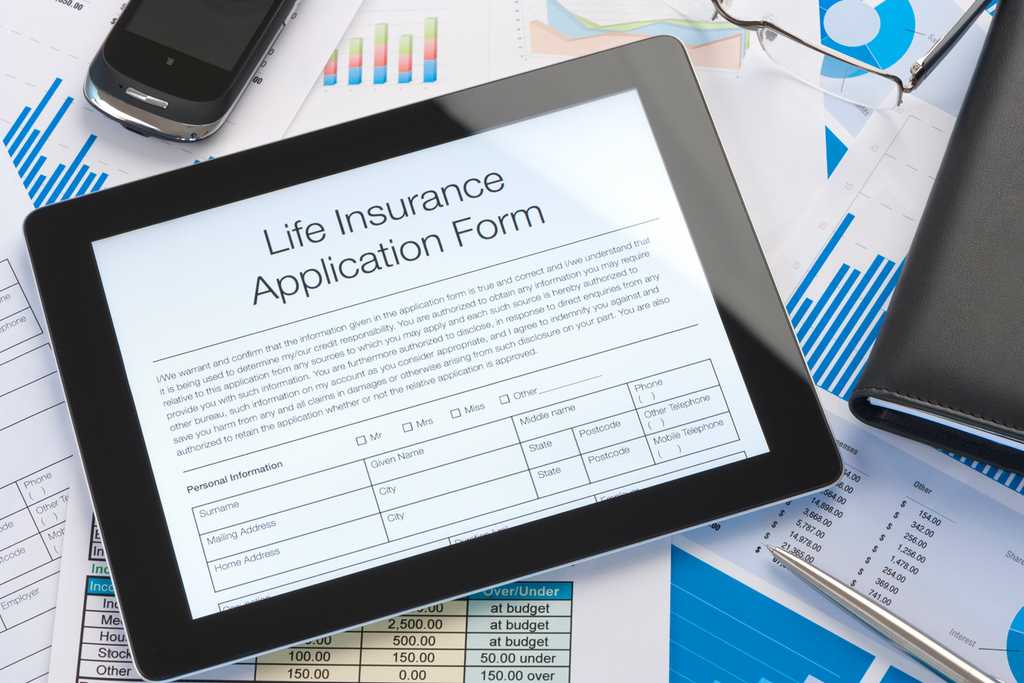Shopping for life insurance can feel overwhelming given the number of options available. How much life insurance do you need? When and where should you buy it? What type of policy is best for your personal situation? We answer these questions and more in this guide on how to buy life insurance.
What is life insurance?
Life insurance is a contract between an insurance company and a policyholder. The policyholder agrees to pay a premium determined by the company. When the insured person (called “the insured”) dies, the insurance company agrees to pay a lump sum to the insured’s chosen beneficiary or beneficiaries.
Though the policyholder and insured are usually the same person, that’s not always the case. For instance, a parent may own and pay for a policy on their child or grandchild. A spouse may own and pay for a policy on their spouse. In some cases, an employer can own a life insurance policy on a key employee.
If a person has an insurable interest in another person, they can purchase a life insurance policy on them. To have an insurable interest means that you will suffer a financial loss or hardship if you were to lose the insured person. If someone cannot show an insurable interest in another person, they cannot take out a life insurance policy on them.
When should you buy life insurance?
If someone would suffer financial loss from your death, you should buy life insurance, especially if you are a primary earner. Think about the impact your death would have on those you love, your business associates, or your boss if you did not have life insurance.
- Your stay-at-home-spouse may have to get a job and put your children in daycare.
- Your working spouse may have to quit their job to find a better paying one or to care for your children.
- Your family would have to come up with the funds for your funeral costs and figure out how to pay off your debts.
- Your children may not be able to pay for tuition costs.
- Your business may close because your partner can’t afford to keep it going without you.
These are just a few scenarios you could avoid with life insurance. If you have life insurance through work, you might think it’s enough, but usually it’s not. In fact, 35% of men and 22% of women believe this, according to LIMRA’s 2021 Insurance Barometer Study. The same study shows that in just one month, a quarter of surviving families would feel the financial effects, with 42% feeling those effects within six months.
So, even if you already have some life insurance, it might not be enough. But how much life insurance should you get?
How much life insurance do you need?
How much life insurance you need varies by each individual. A common figure many use if they don’t want to calculate a number is to buy life insurance in an amount of seven to 10 times your annual salary.
You could also use a simple formula to determine your need by adding up all your financial obligations and debts, and subtracting your current assets and existing life insurance. The number you come up with is the life insurance coverage amount you need.
There is also the DIME method, which stands for debt, income, mortgage, and education. You would determine how much you need from each category and total it to get your coverage needs.
Another method is the Goals-Focused method, which is an exercise where you envision your goals over the next 10 to 30 years and assign a value to it. You may have goals like:
- Paying off your mortgage, student loans, and other debts
- Funding retirement
- Creating an emergency fund
- Buying a home
- Paying for education for yourself or your children
- Paying for final expenses, including your funeral
If you want a more concrete figure or to go more in-depth to figure out how much life insurance you need, you can use a life insurance needs calculator. Allstate has a five-step coverage calculator on its website. LifeHappens.org also has a life needs calculator. You’ll answer seven questions about income, debt, childcare, education, an emergency fund, and burial costs to arrive at your coverage amount.
How to choose a life insurance policy
Now that you’ve determined how much life insurance you need, it’s time to choose a life insurance policy. There are two types of life insurance to choose from: term and permanent. Term offers temporary coverage while permanent life insurance lasts your lifetime. There are different characteristics each type of life insurance provides that can help you choose a life insurance policy.
Term life insurance
Term life insurance is temporary, lasting for a specific number of years, usually 10 to 30 years. You can also get an annual renewable term which renews each year at your current age, which means the rate will increase each year. Some companies also offer a five-year or 40-year term.
Term life insurance offers fixed, or level, premiums for the duration of the term. In exchange for premiums paid, the insurance company will pay out a guaranteed death benefit to your beneficiary. It is sometimes referred to as pure life insurance because of its simplicity in offering just a death benefit and not cash value, like whole life insurance.
Though the standard for a term life policy is a level death benefit that doesn’t change for the duration of the term, there is also a decreasing death benefit option. Over time, the death benefit amount will decrease as the policy nears expiration. This is more commonly offered by banks and creditors to pay off a loan. As of 2020, only 0.1% of term policies are decreasing term, according to the 2021 American Council of Life Insurance Fact Book.
One downside of term life insurance is, once the term is over, the policy expires. If you die after the policy has expired, your beneficiary receives nothing. Some policies have a renewable option, which allows you to renew it before it expires, up to a certain age or other criteria. You might also have the option to convert some or all of the death benefit to a permanent policy while the term policy is still in force.
Permanent life insurance
Permanent life insurance is more complex than term life insurance because it offers cash value, which is like a savings account built into the policy. The cash value grows tax-deferred and will grow based on policy-specific interest rates. There are two main types of permanent life insurance: universal and whole life.
Universal life insurance offers flexibility that whole life doesn’t. You can increase or decrease your death benefit or premiums as life circumstances change, as long as certain criteria are met. If you want to accelerate growth, you could also choose an indexed or variable universal life policy. Rather than offer a guaranteed interest rate, these policies are tied to the stock market.
Whole life insurance is a simpler form of permanent life insurance. It offers cash value at a fixed interest rate, with level premiums and death benefit. Though you have less flexibility than with universal life, the predictability is attractive to some.
Life insurance riders
You can enhance both term and permanent life insurance policies with riders, which are benefits you can include in your policy to meet a specific need. You have several options for life insurance riders to customize your life insurance policy.
- Accelerated death benefit: If you’re diagnosed with a critical or terminal illness with less than 12 or 24 months to live, you can access part of the death benefit while you’re still alive to use anyway you choose.
- Accidental death benefit: If you die an accidental death, your beneficiary will receive the accidental death benefit amount in addition to the policy death benefit.
- Children’s Term: A parent can add coverage for their child or children under their own life insurance policy. If the child dies at a qualifying age, the policy will pay the rider amount to the policyholder.
- Spouse term: Like the child’s term rider, the spouse term rider allows a policyholder to include coverage for their spouse. If the spouse dies while the policy and rider are in force, the policyholder gets paid the rider amount.
- Waiver of premium for disability: If you become disabled, your insurance carrier will waive the premium until you’re no longer disabled or pass away. There is typically a waiting period before this rider will take effect.
Availability and rider cost depend on the company and policy type. There may be eligibility requirements and exclusions for some riders. If you’re considering adding riders to your life insurance, ask for details and specifics about the riders to make sure you understand the limitations and payout terms before including them in your policy.
Where to buy life insurance
When you’re ready to buy life insurance, you have several options available to choose from. Sites that aggregate insurerers like Policygenius have made the process much easier and (relatively) painless. You can also buy life insurance directly through the company or an insurance agent or broker. You can also buy it online, over the phone, or in person.
If you’ve done your research and have settled on a company, you may be able to buy directly through the company. While this may be the more direct approach, you may not have as many options available and the company may be biased to its own product when answering questions.
If you’re unsure or want to make sure you’re getting the best rate, you may be better off working with an insurance agent, broker, or financial advisor. Twenty-six percent of people surveyed said that talking to an agent made the purchase process easier, according to LIMRA. Of those who own life insurance, 97% were satisfied with the service provided by a financial professional.
Independent brokers aren’t limited to insurance agents. There are also online brokers offering a way to compare multiple policies, select the best one, and apply, without leaving the website. Examples of online brokers include SelectQuote, Policygenius, and IntelliQuote.
You can also buy life insurance from an organization, like a credit union you bank with. Like employers, credit unions may offer group life insurance to its members. Group life insurance has its advantages, such as a fixed rate based on age and coverage amount without the need to undergo a medical exam. There is usually a cap on the coverage amount, which means you could have to buy another policy to ensure your needs are met.
How much does a life insurance policy cost
The cost of a life insurance policy can vary widely, and it’s based on many factors. The younger and healthier you are, the cheaper life insurance will be. Buying term is cheaper than buying permanent life insurance for the same coverage amount, because there is no cash value component and the coverage is temporary.
Life insurance policy costs are typically based on:
- Your age
- Your gender
- Your health status
- How much coverage you need
- The type of policy
- Added policy riders
- Your occupation and hobbies
- Your driving record
- Whether you use tobacco
Most companies give you payment options, like paying monthly, quarterly, semi-annually, or annually. If you choose to pay your premiums in installments, you may incur fees, though having a more manageable payment might be worth it to you.
Like other forms of insurance, life insurance costs can vary by company. It’s a good idea to get at least three quotes from different companies to compare costs, benefits, and features. This is where working with a broker can help, because they can do the work for you.

